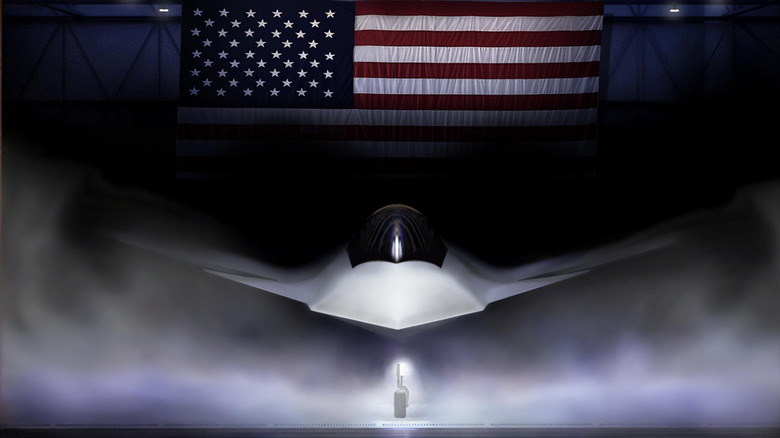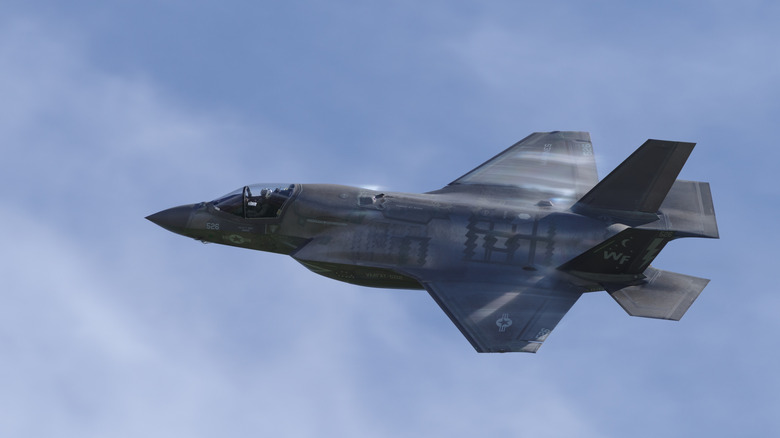
The U.S. Navy's dream of a next-generation fighter jet, the F/A-XX, is officially on the back burner. It was an ambitious program intended to deliver a sixth-generation, carrier-based combat aircraft to replace the aging F/A-18 Super Hornet. The plane was dreamed up as a stealthy, survivable beast packed with futuristic tech.
Sadly for the jet, the Pentagon dropped the proposed Fiscal Year 2026 budget in June, and it was like a gut punch for the entire project. The budget effectively shelved the F/A-XX,
slashing its funding massively. At the same time, it went all-in on the Air Force's new toy, the F-47. The main reason for this pivot, as The War Zone reports, is a stated belief from U.S. officials that America's defense industrial base simply can't build two different top-tier stealth fighters at the same time.
That said, the F/A-XX program isn't completely dead. The new budget does carve out $74 million just to finish the jet's design work, but that's still a massive 84% drop from the $454 million it received in the previous fiscal year. This token amount is meant to keep the option for the F/A-XX open for the future and prevent engineers from being spread too thin.
Read more: 10 Largest Air Forces In The World, Ranked By Military Aircraft Numbers
But Why Focus On The F-47 Alone?

From what it looks like, the Pentagon has decided that one leap is better than two stumbles. This leap happens to be the Air Force's F-47, which is getting a cool $3.5 billion in funding. This decision to prioritize one over the other stems from the reality that the two jets, both sixth generation, were designed for fundamentally different roles. Boeing's F-47 will be a land-based air superiority fighter meant to replace the legendary F-22 Raptor. The F/A-XX, on the other hand, was meant to be a multirole fighter operating from aircraft carriers.
As a Forbes piece pointed out, you can't just use the same plane for both. Carrier jets live a hard life of punishing catapult launches and arrested landings, all of which require a much tougher airframe. They also need special features like folding wings for tight storage on a carrier deck and protection against saltwater corrosion. Developing such a jet can be far more expensive. Moreover, the other project also seems further along, with reports suggesting that Boeing is already looking to develop the F-47 in St. Louis, Missouri.
Not everyone buys the Pentagon's reasoning, however. Boeing Defense CEO Steve Parker told reporters at the Paris Air Show that his company could absolutely build both jets simultaneously, according to DefenseOne. He claimed Boeing has invested nearly $5 billion in its facilities with the intention of executing both programs.
Does The US Even Need Such Expensive Jets?

With all this talk of budgets and industrial capacity, it's easy to forget the bigger picture. The push for sixth-gen fighters isn't happening in a vacuum. It's part of a wider push as countries like Russia and China rush to develop the next generation of fighter jets. China has already been spotted testing its sixth-gen jets, possibly the Chengdu J-36 or the Shenyang J-50, since late 2024 multiple times. Lawmakers are understandably getting nervous. Some, like Rep. Ken Calvert, have even warned that any delay could leave the U.S. "dangerously outmatched in a China fight," per DefenseScoop.
But with all the hype around drones and AI, why doesn't the military go the "unmanned" way instead? An Axios report noted that a deeply ingrained "pilot culture" persists within the Air Force. Josh Kirshner of Beacon Global Strategies told the publication that, culturally, the "Air Force just isn't there yet" for a fully autonomous fighter. One retired general echoed this, noting that pilots who fly drones feel there is a "small percentage of missing the situational awareness of not being there."
Want the latest in tech and auto trends? Subscribe to our free newsletter for the latest headlines, expert guides, and how-to tips, one email at a time.
Read the original article on SlashGear.













